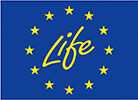On Friday 27 May MCCAA will be organising a workshop as part of the LifeMedGreenRoof Project. The scope of the workshop is to kick start the process of drafting a local standard for green roofs.
The workshop will be held at the Studio, Faculty for the Built Environment, University of Malta, Msida Campus between 08:30 and 13:15.
What is it all about?
A rise in energy demand in urban areas is contributing to problems such as an increase in the heat island phenomenon, air pollution and flooding causing unnecessary pressure on urban dwellers. It is for this reason that the EU’s Europe 2020 Strategy aims at reducing the energy requirements by a minimum of 20% by 2020. The Commission’s Energy Efficiency Plan 2011, has identified that buildings have the greatest energy saving potential. The plan focuses on mechanisms to reduce the energy requirements of existing buildings in particular the role of public buildings as demonstration and dissemination projects in introducing energy efficiency criteria.
Green roofs have a role to play in rendering buildings more energy efficient. Most of the technology on green roofs is influenced by north European experiences especially when it comes to plant selection. However, the Mediterranean climate is quite particular and varies according to both longitude and latitude. This project aims at understanding better the performance of green roofs and to demonstrate the benefits of the technology for a wider dissemination of the technology.
Project Objectives
The advantages of green roofs are various. However, for the technology to dissipate into our urban environment, one has to be sure that the basic components function in an efficient manner. As a consequence, it is the project’s objective to provide a baseline study of green roof technology in a Mediterranean environment. For Malta, the project aims to:
- create a growing medium ideal for the local climatic conditions
- study the adequacy of native plants in a green roof environment
- construct two accessible green roofs as case studies to demonstrate the benefits of the technology
- record and demonstrate the insulation effects of green roofs in a local context
- record and demonstrate the storm water management qualities of green roofs and the possible effects on mitigating local flooding
- develop/improve national guidelines for the construction of green roofs
- draft a national strategy for green roof dissemination
- identify possible barriers and provide solutions to technical and economic viability of large-scale introduction
- publicise green roof technology.
Expected results
The expected results include:
- identification of local materials adequate as growing media
- identification of suitable native plants
- the construction of two demonstration green roofs, one in Italy and another in Malta
- publication of data on insulation properties
- publication of data on storm-water management
- drafting of green roof standard for Malta
- drafting of national strategy for green roof dissemination presented to the relevant Maltese authorities.
The role of MCCAA is to draft the Green Roof standard for Malta, based on the results obtained from the research being carried out at the University of Malta. The project is now entering a new phase where the results on plant selection and the usage of appropriate growing media obtained during the past two years in both Italy and Malta will be documented in a national standard developed by MCCAA for the construction of green roofs in Malta. The workshop, organised by MCCAA on 27 May, will launch the process of developing the national standard. The aims of the workshop are to provide stakeholders with an outline of the project, explain the standardisation process, the potential benefits of the standards and to identify experts and others interested to participate in the drafting of the standard.
This project is partially funded through LIFE+ which is the EU's financial instrument supporting environmental and nature conservation projects throughout the EU
ec.europa.eu/environment/life



